Table Of Contents:
- Why do B2B and B2C have different marketing automation platforms?
- Channels
- Data
- Key features
- Process vs experiment-based
- Pricing
Marketing Automation doesn’t have a unique or scientific definition that you can fall back on to qualify a certain marketing tool as a marketing automation solution. Most definitions over the internet that you may find would be either vague or molded to suit the interest of the company publishing it. For instance, without naming anybody, resource posts by ESPs would make you believe that marketing automation is all about creating automated email workflows which is a total misleading definition.
Eventually, amid the clutter of definitions, I hit the one by Scott Brinker and found peace.

Scott Brinker, Editor, ChiefMartec
“I think of marketing automation, in the broadest sense, as Gartner’s “digital marketing hub.” It’s the central switchboard for campaigns and customer data.
That’s why I’m most excited about marketing automation solutions that take a true platform approach, opening up their switchboard to plug-and-play ISV marketing applications of all flavors.” via revengineinsider.com
What is a Marketing Automation Platform? (both B2B and B2C)
A marketing automation platform encompasses a comprehensive range of specific marketing technologies that are aligned together such that your marketing program can be put on autopilot.
So a certain company, independent of B2B or B2C, has requirement of various marketing technologies throughout the user’s lifecycle for various reasons like lead nurturing, lead tracking, lead scoring, run campaigns etc. A solution which lets them automate and manage all these programs from a single dashboard is essentially called a marketing automation platform (hereby referred to as MAP for simplicity).
Obviously, there is no software which could accommodate absolutely 100% of your marketing program within its realm. Even in best cases, there are going to be some outlier activities. We liberally choose to call even those solutions as MAPs that cover 70-80% of marketing for you.
I understand it’s going vague but basically, you cannot create a checklist to qualify a certain tool as MAP. It’s just that some MAPs can be more MAPpy and some can be less. For instance, take this definition of marketing automation in this guide and notice the usage of ‘including’
• Lead generation
• Segmentation
• Lead nurturing and lead scoring
• Relationship marketing
• Cross-sell and upsell
• Retention
• Marketing ROI measurement
Some of these practices are possible at small volumes without marketing automation, but technology becomes essential with any scale.
Moral of the story is that we don’t have a scientific definition for MAP, not yet.
Why do B2B and B2C have different marketing automation platforms?
Since customer behavior in B2C and B2B domain are different, their business goals are going to be different too. With differing business goals, their choice of marketing technologies is going to vary. Ultimately, with varying technologies, the kind of marketing automation platform that caters to their interest are going to be different.
Automating these processes requires different types of data collection, analytics, and engagement which are served by MAPs differently.
Having discussed why the two MAPs are different let us understand how they are different by evaluating them on the basis of following parameters.
1. Channels
Key takeaway- The number of engagement channels in B2C MAPs exceeds way larger than that of B2B.
Email is still the unspoken official mode of communication which explains why it is still the primary engagement channel in the B2B sales process. In a B2B sale, the life-cycle stage of the user may progress but the medium of communication remains consistent- email. Face time in succeeding stages.
However, in the case of B2C, the stress is on multi-channel and lately omnichannel engagement. A brand is invariably required to reach the customer at the channel that is most convenient to him at the moment. Email is just one component of the channels pool that they employ.
Consider two B2C and B2B MAPs like Hubspot and WebEngage and compare the number of channels in their offerings.
Comparison of Hubspot and WebEngage
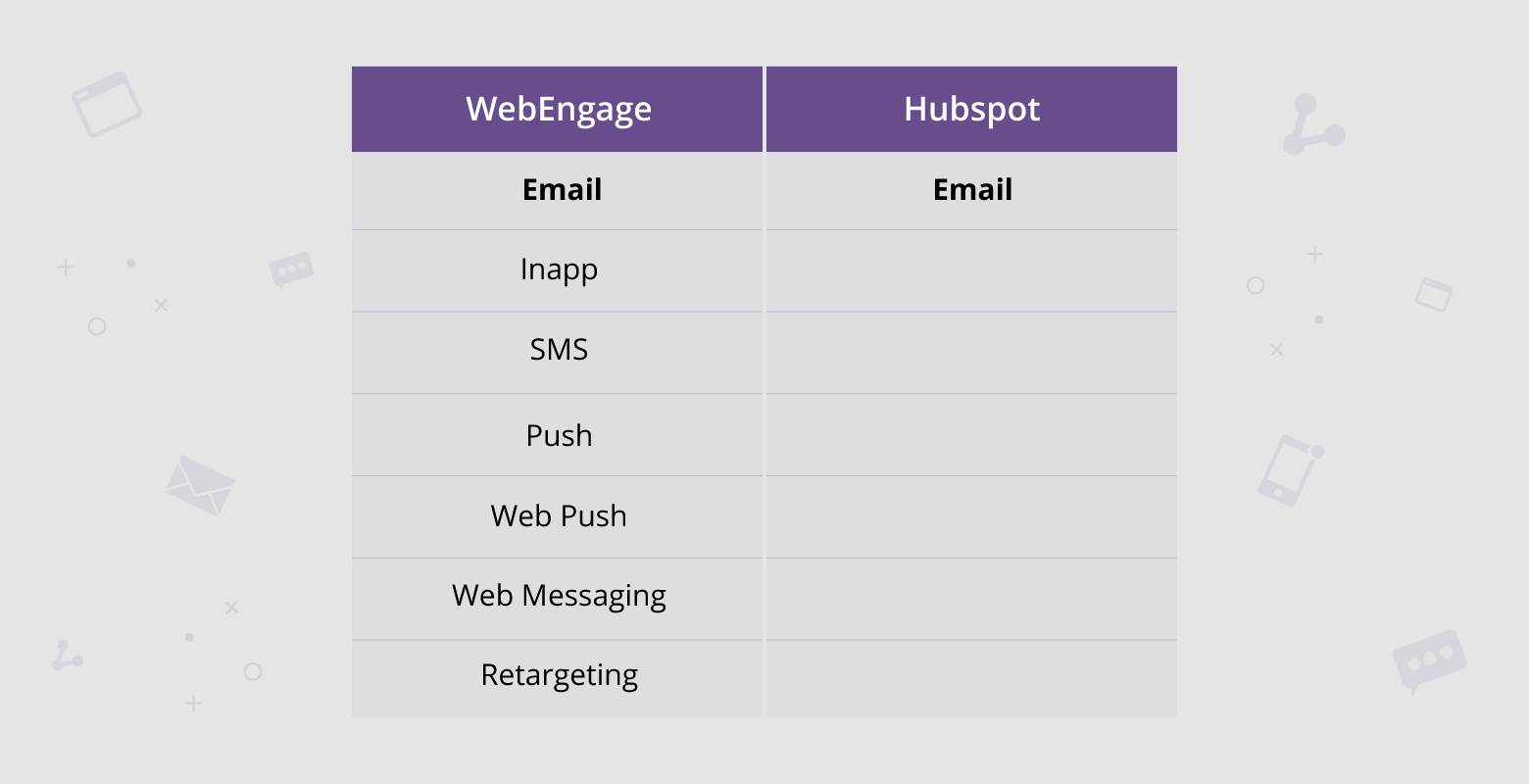
You can take inspiration from some of the top B2C brands on how they leverage multiple channels to run effective marketing automation campaigns.
2. Data
Key takeaway- The kind of data that you save in B2B and B2C MAPs are tremendously different. Plus, B2B MAPs sources data mostly from CRM while B2C builds the database from scratch.
In B2C the user is required to perform some interaction on your platform for you to be able to initiate a communication.
Since the B2C sale is largely driven by emotional impulse the quality of the data is centered around user’s browsing behavior and lifestyle attributes. Data around age, gender, purchase history, most visited category etc. basically anything that could influence the purchase of an individual.
They track all the users who engage with the product in any way, on the web via cookied browser and on mobile via combination of unique identifiers found on the device. Their extensive reliance on cookies is the reason why in a web-based B2C product the user is required to perform some interaction on your platform for you to be able to initiate a communication.
The data they collate is then leveraged to analyze the triggers and segments that contribute to higher purchasing behavior.
For instance, take a look at the user profile in a B2C MAP
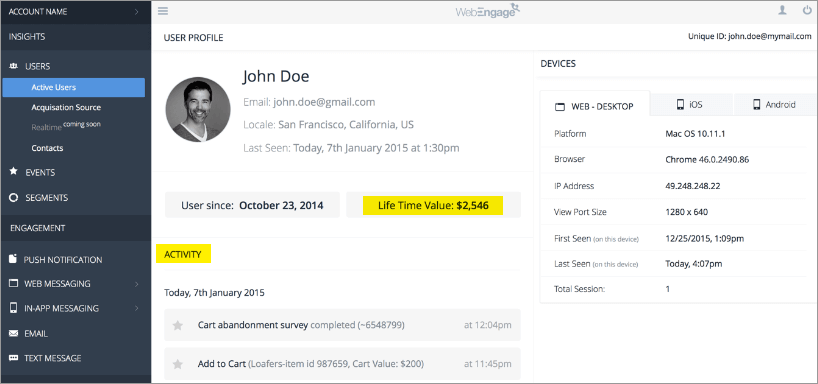
On moving from B2B to B2C the quality of the database changes. Attributes that you capture for the end customer in B2C varies tremendously in B2B.
B2B marketers, for the obvious reason, would have little to do with the age, color preference, gender etc. of the user. They need data like company size, the position of contact, industry etc which browsing data points wouldn’t reveal. So B2B MAPs primarily source their data from CRM, like Salesforce, Oracle etc. or whatever they are using.
They further complement this data with browsing behavior and landing pages to grade the lead. This way they don’t have to build their database from ground up like B2C and can begin working immediately post integration with CRM.
B2C MAPs although accommodate a larger volume of data than B2B.
The following image is from Salesforce. Compare the contrast in the labels with the one above:
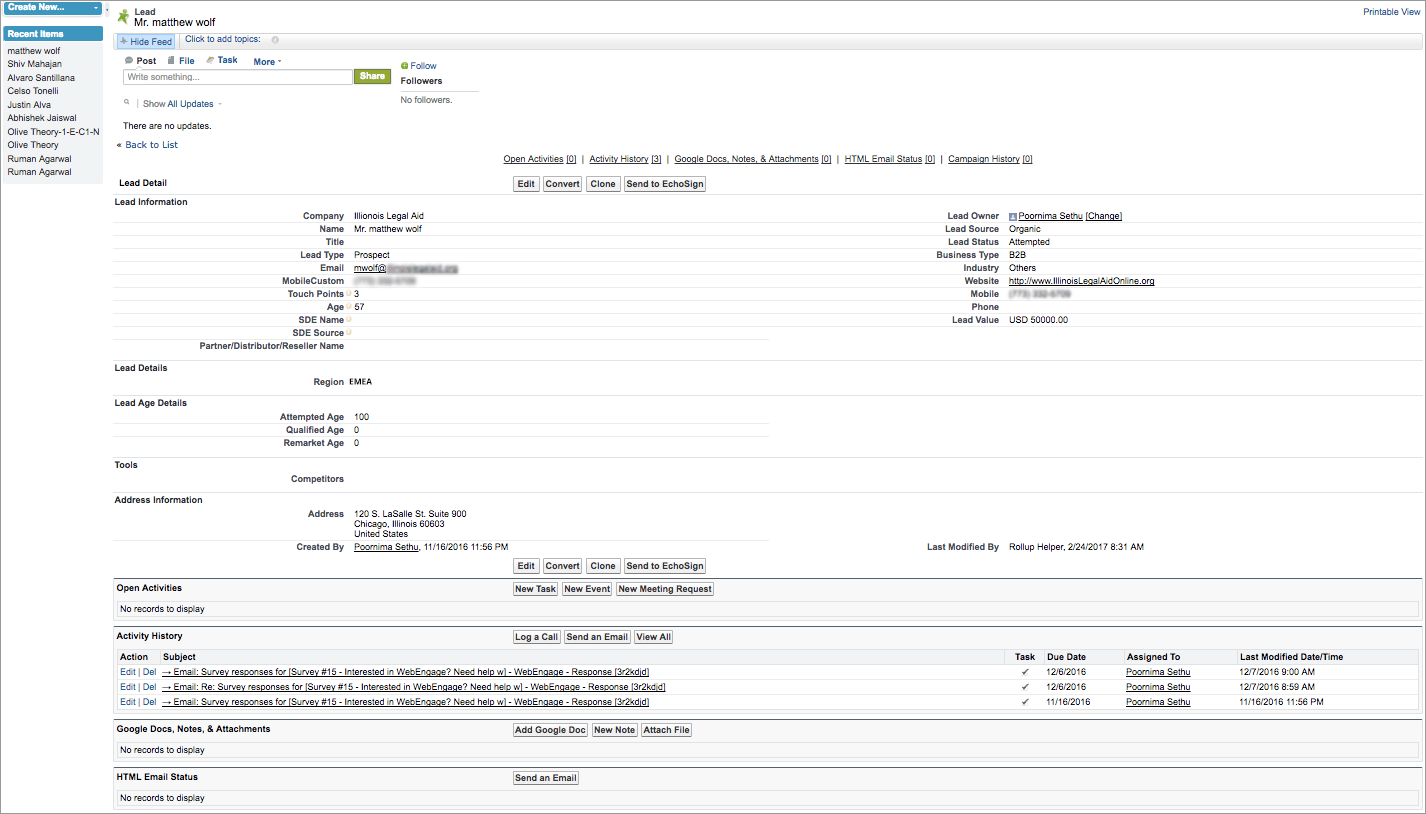
3. Key features
Key takeaway- B2B’s pain point is lifecycle management while that of B2C is retention. The contrast of priorities translate to different key features in the two MAPs
This would be little longish so bear with me.
- The target audience in B2B is niche. They need to restrict their marketing to a very smaller base of prospects whose number only in rare cases would touch 5 digits. B2C, on the other hand, caters to a relatively large audience.
- In B2C it’s just one single individual trying to make a purchase, in B2B, it’s whole company that you are after. So, a visitor from Verizon is going to mean two totally different things to a B2C and B2B company.
- B2C marketing aims to elicit the emotional response of the user while B2B marketing seeks a rational, informed response. So, although branding has an importance invariably in all transactions it plays a much pivotal role in B2C than it does in a B2B sale.
- B2B products carry a higher risk because of the number of levers it controls within the product. This is why things like competitor analysis or proof-of-concept are a major step in the B2B process. Those things while buying a bike or toothpaste or even insurance are simply non-existent.
- A B2B product becomes intrinsic to the business’ infrastructure. Replacing them is like reinventing the wheel. So they have higher stickiness than consumer products. Due to this B2B transactions are recurring in nature while B2C are one time purchases.
- The above factors coupled with the inherent risk and deal size makes B2B sales cycle long and consultative in nature.
I have converted the above points into an infographic below

All the points discussed above entails that the larger pain in B2B is not acquisition but effective life-cycle management that would lead to conversion. They need tools which let them create a volume of high qualified leads and compresses the sales cycle.
For B2C, the biggest pain is retention. Their primary metric is LTV (B2B got it covered because of its recurring nature) which is a function of customer retention. Saying that they require tools which let them handle their campaigns that aim to re-engage their user.
Due to the differing pain points, the kind of features that the corresponding MAPs provide to address them are different:
B2B MAPs– Lead scoring, Lead nurturing, CRM integration,
B2C MAPs- Retargeting, Reputation management, Retention marketing, Multi-channel engagement
4. Process vs experiment-based
Key Takeaway- B2B marketing is more like a process. B2C on the hand stress on tests and experimentations and need tools that let them create powerful segments.

Daniel Newman, Author, The New Rules of Customer Engagement
“The success or failure of B2B companies will depend largely on their ability to forge one-on-one relationships with their customers. The faster they adopt the 1:1 marketing structure, the better they will be at meeting their collective business goals.”
Marketing in B2B is one-to-one. The emergence of account-based marketing is the product of the same need.
B2C marketing on the hand stresses majorly on branding. One-to-one marketing is simply beyond the realm of B2C marketers because of their inability to create extensive user profile like B2B marketers can with the help of CRM. Furthermore, even if they build the profile, holding 1:1 communication with such volume is only an idealistic thought. So, for B2C marketers, the success lies in their ability to create micro-segments and creating personalized offerings for each of them.

“Much of B2C advertising is still branding, making it highly subjective. Most B2B marketing is not. It is tactical, and all tied to a central database, usually called a CRM.” via Clickz
Therefore B2B marketing is more like a process. The reason being that they solve a problem which is experienced by entities displaying certain common traits in terms of size, industry type, revenue, use-case etc. Since the discipline of marketing is based on first identifying the consumer and then strategizing accordingly, in B2B, understanding your users is not a recurring or exhaustive affair.
For most companies, there are established rules and portfolios and scope of creativity is only limited to how the quickly and efficiently the concerned individual can execute it.
While B2C is largely dependent on tests and experimentation. To accomplish that they need products that are capable of making sense of the enormous data dump that shoots up every day and lets them use that data to create powerful engagement campaigns.
5. Pricing
Key Takeaway- In B2B the pricing is based on the number of contacts. In B2C it’s the number of volume of data they capture mostly quantified by the number of Active Users.
In B2B each lead is contactable, for only then they are going to be qualified as lead, and like we discussed, the function of the MAP is lifecycle management of each lead. B2B MAPs are therefore priced on the basis of the number of contactable leads that you want to manage via the platform.
Some examples
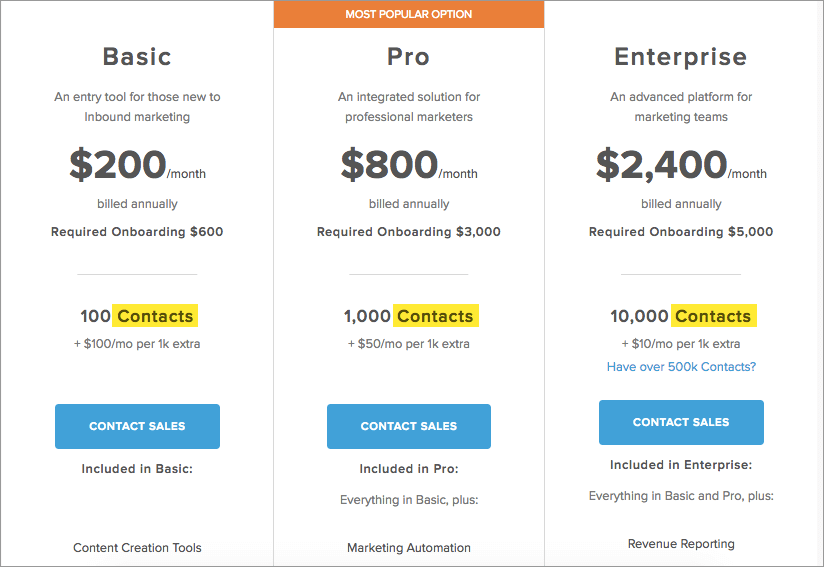
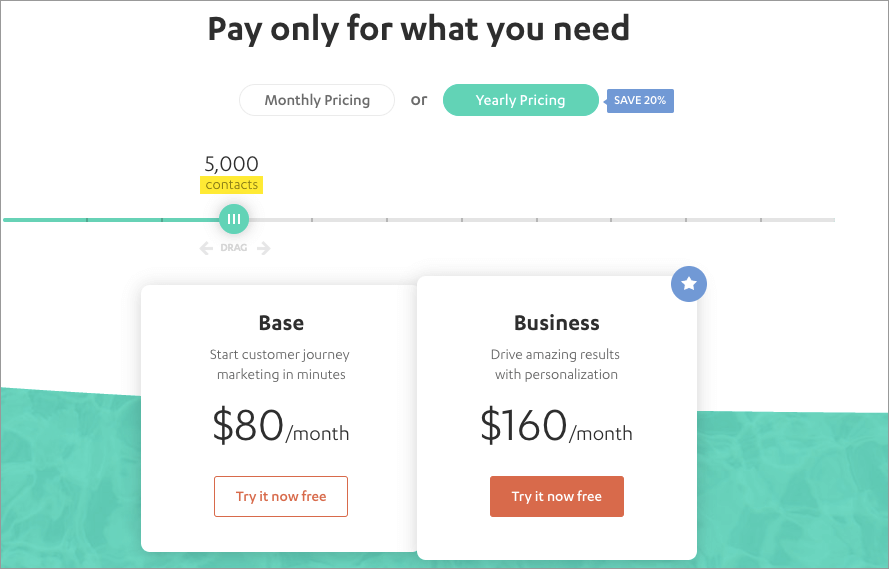
Because of this contact-based pricing, B2B MAPs can get extremely expensive for B2C companies.
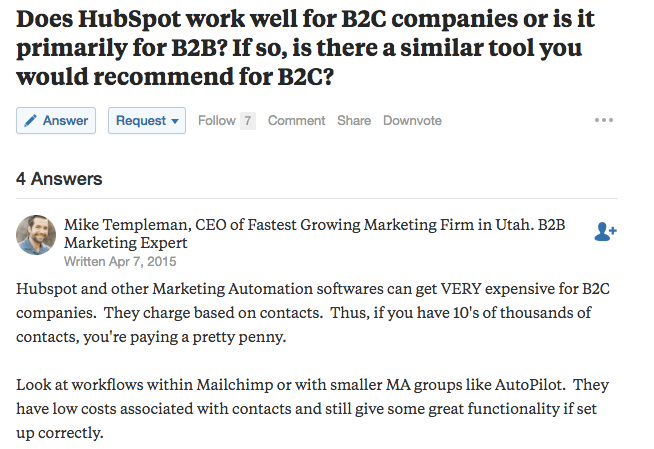
Mike Templeton is the CEO of a Utah-based marketing company- Foxtail Marketing.
In web-based B2C product there are millions of users and approximately only 10-30% of them are contactable. In mobile products this number would be between 40-80% (for opt-out rate of push is increasing). But since the number is still beyond the scope of one-to-one communication they collate data to create high definition atomic units of users also called segments and engage them with right incentive
The B2C companies thus charge on the basis of the number of unique users you want to track and engage. The industry term to quantify such users is MAU(Monthly Active Users)- the number of users who engages with the product in a month.

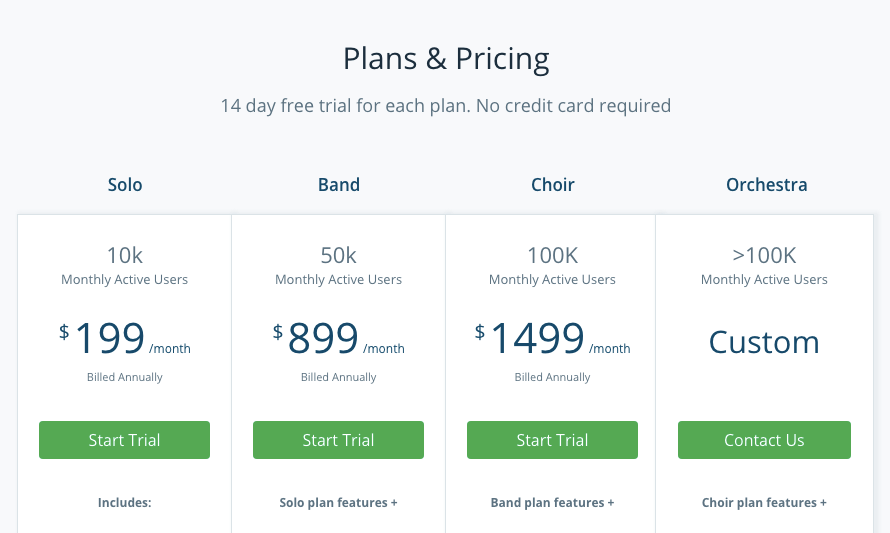
Several companies define MAUs in their own way, which is also explicated in pricing page of Localytics. “Some other platforms consider any user you send a message to as an MAU, even if the user never actually opens your app. With these platforms, you’ll need to purchase a larger number of MAUs if you want the ability to re-engage inactive users.”
But ultimately boils down to the number of users you wish to engage. Like Urban Airship prices on the basis of reachable users or addressable users.

So basically both B2B and B2C charges on the basis of the number of users but one considers the number of contactable ones and other does the number of trackable ones.
‘Number of contacts’ is the fundamental scale on the basis of which pricing is done but it is not the only condition. Almost all the platforms club the features together and create several slabs of pricing depending on the requirement.
Conclusion
Both the platforms are learning from each other and the definitions are converging. For instance, B2C features like retargeting, multi-channel engagement are showing up in B2B. On the flipside, lead nurturing, close loop reporting etc that were earlier in the territory of B2C are now being picked up by B2B platforms.
In a few years, there wouldn’t be much difference between them to warrant a post like this. Until then :)
Bonus Read – 15 Really Effective Marketing Automation Examples





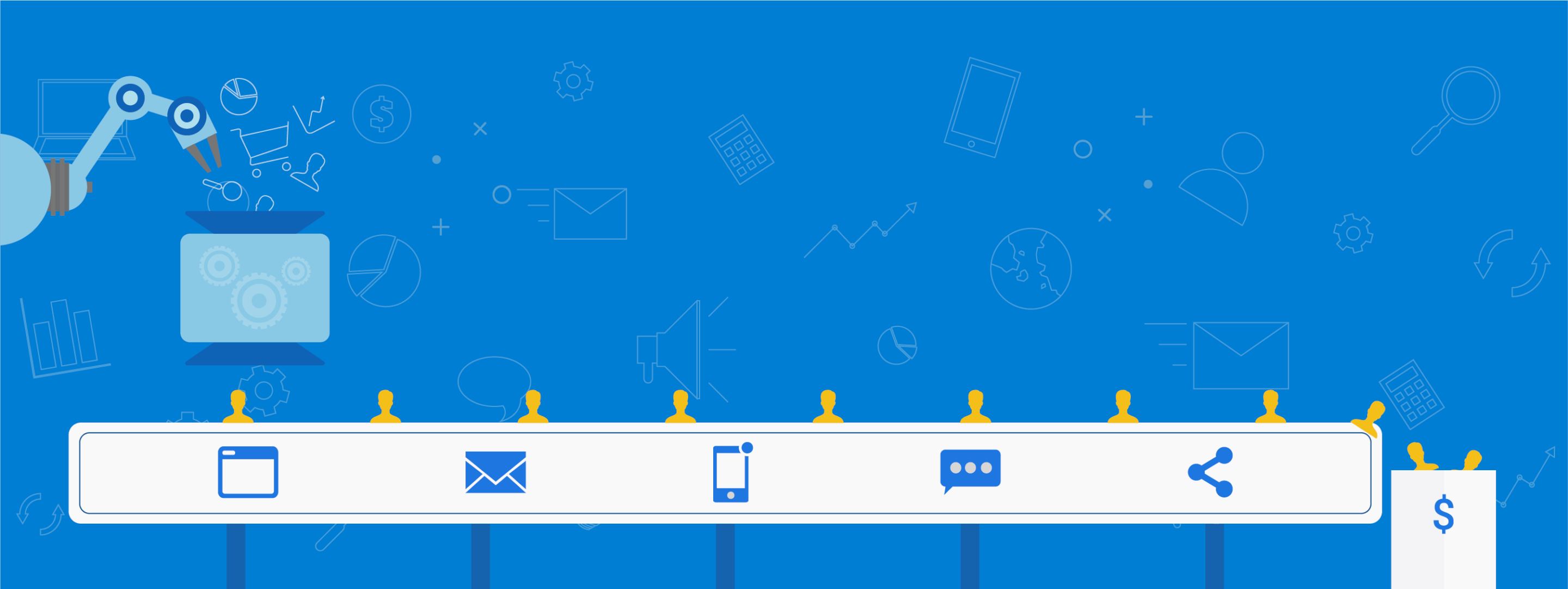


 Prakhya Nair
Prakhya Nair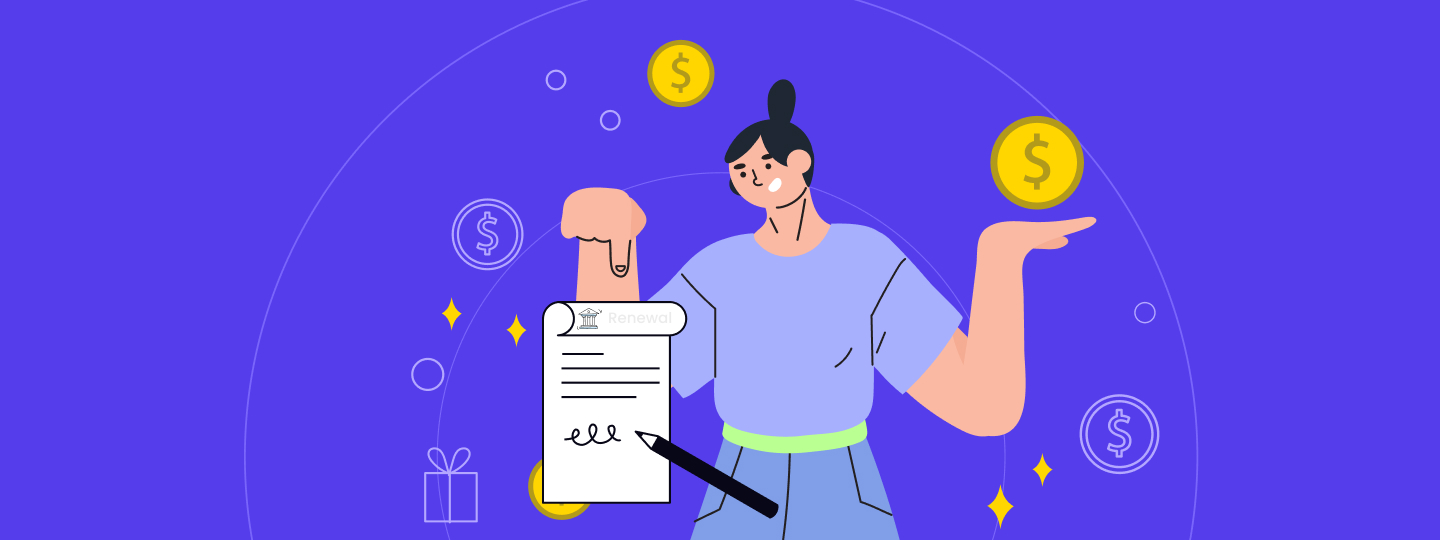
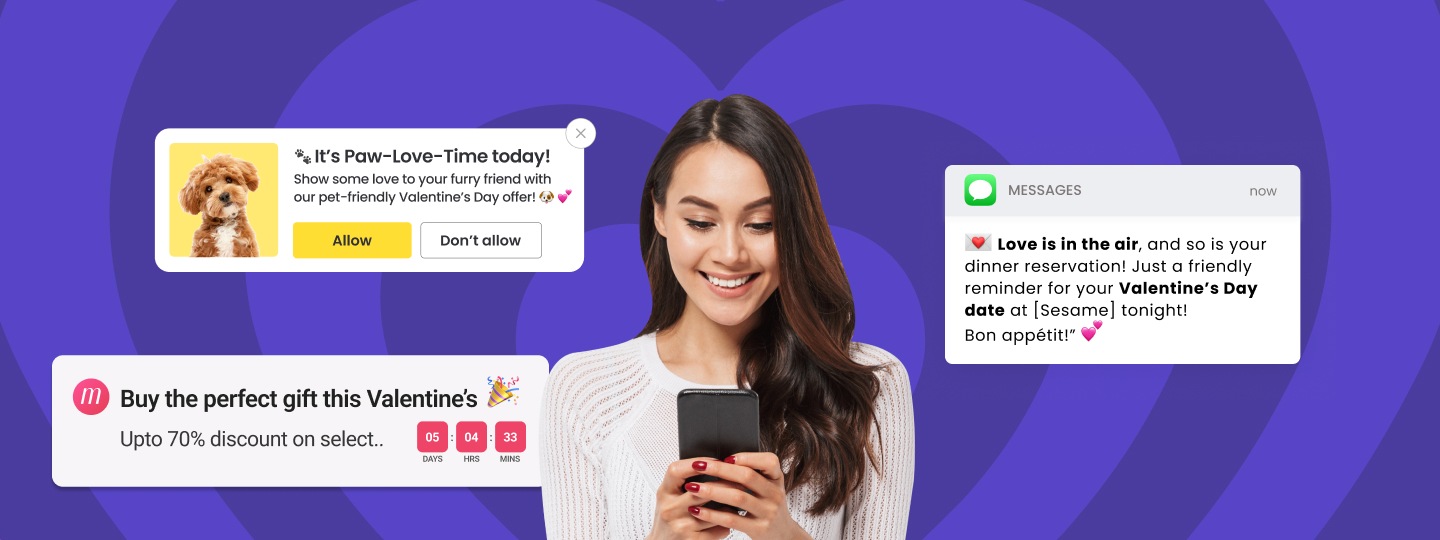
 Diksha Dwivedi
Diksha Dwivedi
 Vanhishikha Bhargava
Vanhishikha Bhargava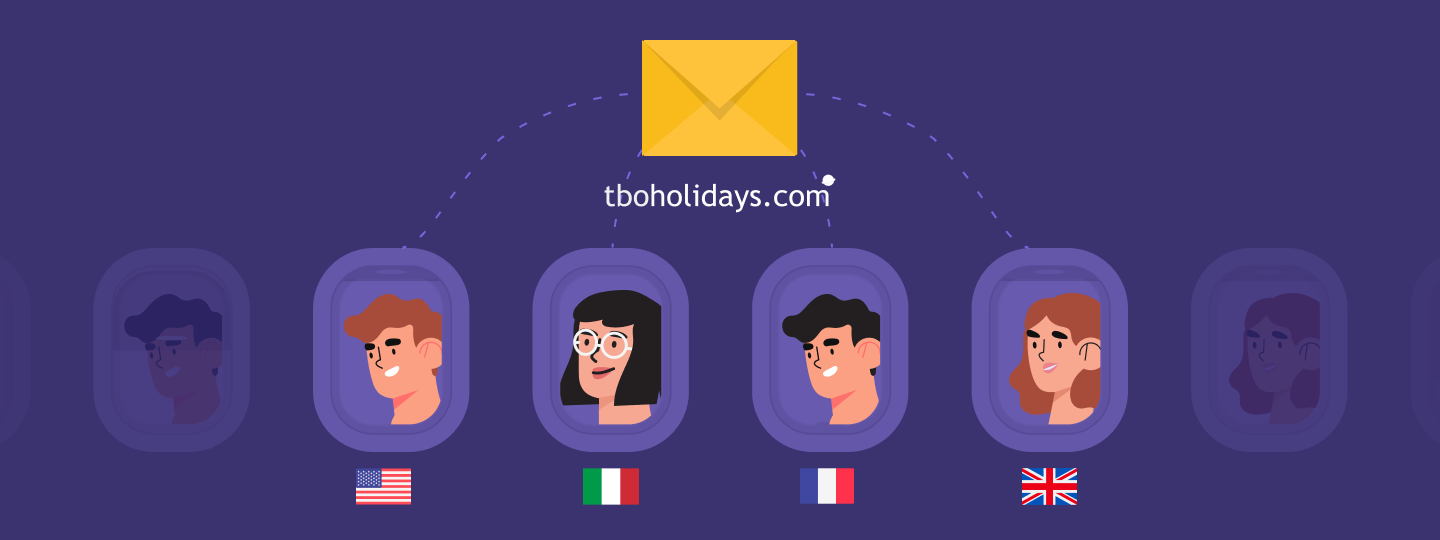
 Dev Iyer
Dev Iyer